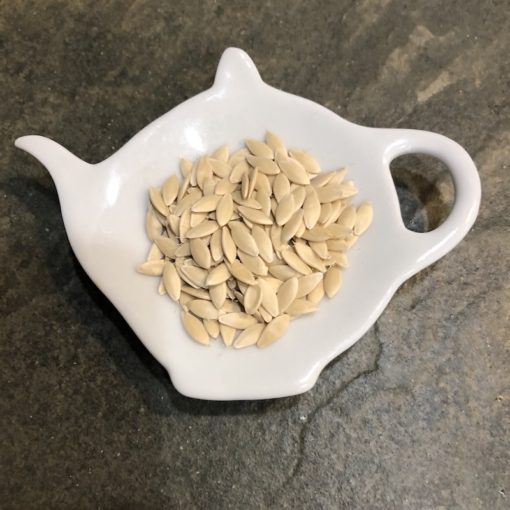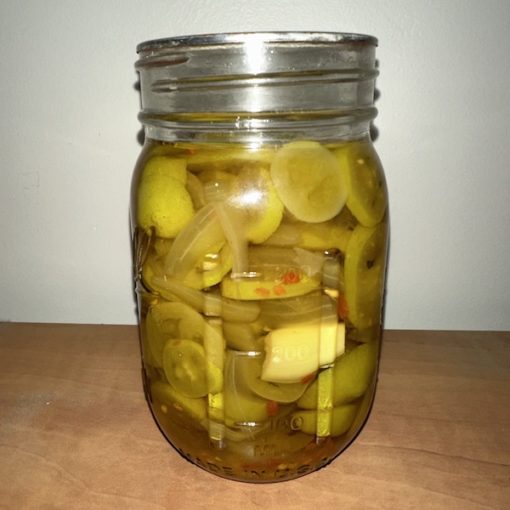Oh, the joy of harvesting black walnuts!
Just kidding, harvesting black walnuts is quite a pain. But it is so worth it!
Black walnuts are extremely flavorful. Much more so than their English cousins. They are fantastic for baking!
How to harvest & process black walnuts
First things first: gather them all up!
I know, this step sounds pretty obvious. However, some folks don’t bother gathering up walnuts when the husk or hull (outer leathery layer) isn’t perfect. The husk is usually green and solid. But even husks that have turned darker, almost black, could be housing a perfectly good nut. Same goes for husks with holes in them. The black walnut shell is very hard and oftentimes, the worms or bugs that get into the husk don’t actually make it all the way through the walnut’s hard outer shell.
Next, let’s remove those pesky husks.. so fun!
Removing the husks from black walnuts is oh so fun! They’re tough, hard to break through, and oftentimes super stuck to the walnuts shells.
NOTE: (and do not skip this) WEAR GLOVES! Walnut husks and the outsides of the shells pre-washing will dye everything. Literally, everything. This includes your skin, your clothing, your shoes, even your driveway if you process them outside.
If the walnut has been left long enough and the husk is starting to turn black, the husk may come off easily. If this is the case, just peel it off.
If it’s not easy, the best way I’ve found to get through to the nut and pull it off is to lay the walnuts out in a row and run them over with the car. This cracks that husk and makes removal much easier.
The washing phase…
Now we need to wash the walnuts. Again, WEAR GLOVES – I cannot stress this enough and I have plenty of shirts to prove it’s necessary, ha!
If you’re only processing a handful of black walnuts, you can simply wash them in the sink. Keep in mind though, washing in the house, the possible water splashing, things around the sink (your clothes and self included) could end up being dyed brown. Personally, I think it’s best to wash them outside.
Put your walnuts, husks already removed, in a bucket. Fill the bucket with water and swoosh them around or stir them with a stick or something. If a walnut floats, toss it.
Dump the dirty water out of the bucket, repeat as many times as necessary to get the nuts clean.
Many people use pressure washers for this. the super hard spraying gets the walnuts cleaner much faster. I’ve also seen folks take their buckets of walnuts to the local self-serve car wash and use the pressure washing wand (without soap) there. This also keeps any staining away from their own driveways, ha. But doing this in the grass takes care of that issue as well.
Once all the walnuts are nice and clean, time to move on to the next (and longest) phase of the process.. drying.
A floating walnut usually means one of two things: (1) the nut didn’t fully develop and the shell may be empty or pretty close to it, or (2) a worm or other bug did make it all the way into the nut and ate it. Either way, you don’t want to waste time with this nut. Let the squirrels figure out if it’s worth cracking into.
Drying black walnuts is not a short process, be prepared to just wait.
Drying out your walnuts, in their shells, takes time. Drying out walnuts takes about two to three weeks, and there are several different ways to do it.
I personally prefer to hang them outside under cover or in our shed, in a net bag. I use netting bags I got oranges and tangerines in. Just repurposed with a string added to the opening so I can pull it tight. Hanging them like this allows for great airflow. Every day or two, I just tussle the bag some so walnuts in the middle are moved to the outside, helping them all to dry evenly.
Walnuts can also be dried on a wire screen. Layer them one or two walnuts thick (but no more than three thick), and make sure they’ve got plenty of airflow around them. Check on them every day or two and move them around some as needed.
The drying part of the process doesn’t take a whole lot of effort, just patience.
If you want to store black walnuts in shell, you’re done!
Once dry, black walnuts can be stored IN SHELL in a cool, dry place for up to a year. Just crack and use and needed. You will need to crack about two pounds of in shell black walnuts for about a cup of walnut meat.
Finally! Let’s crack these nuts and get to the meat of things!
Cracking open a black walnut is not at all the same as cracking open an English walnut. Those fancy nutcrackers or even the metal ones in your utensil drawer will 100% NOT WORK.
To crack open black walnuts, you need a hammer or a vise. No joke – these shells are extremely hard and difficult to crack open.
NOTE: wear safety glasses or goggles! The shells are tough and will fly absolutely everywhere if you aren’t careful. Last think needed is a sharp piece of shell to the eye.
Using a hammer…
If you’re using a hammer, place the shell on a hard surface and aim to hit it on the seam with the hammer. You want to hit hard enough to crack the shell, but not bash it so hard that it breaks into a billion tiny pieces. We do, after all, want the nuts to be in edible chunks.
Using a vise…
Put the walnut in the vise and tighten the vise slowly until the nut cracks. If you tighten too fast, you’ll have a bunch of tiny pieces and the shell will go flying.
Crack many at once, then deal with getting the meat out…
Once you’ve cracked a bunch of walnuts, go through the pile and start getting the meat out. This can be done with a nut pick or other small tool. Set aside any that require further cracking to hit with a hammer or use a vise on again later.
Now you’ve got a nice pile of black walnut meat… so what’s next?
Eat or store your black walnut meat 
Simply store the nut meat in an airtight container. They will last about 6 months in the fridge and up to a year in the freezer. For longer storage, use a vacuum sealer and still store in the freezer.


